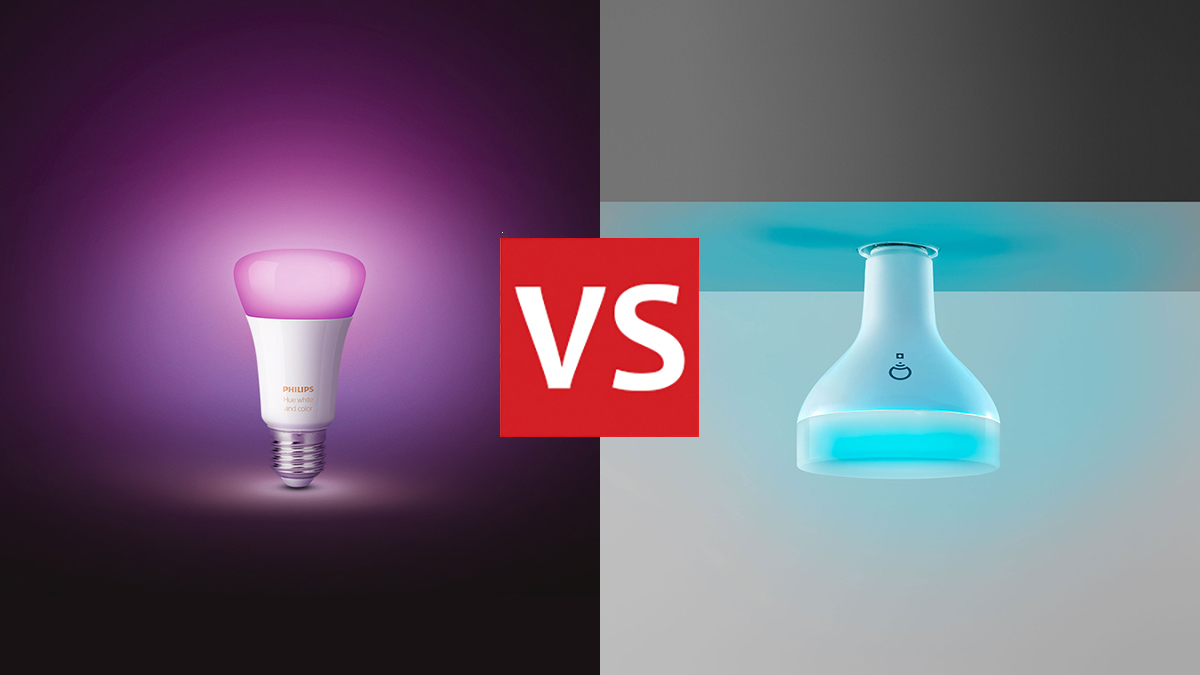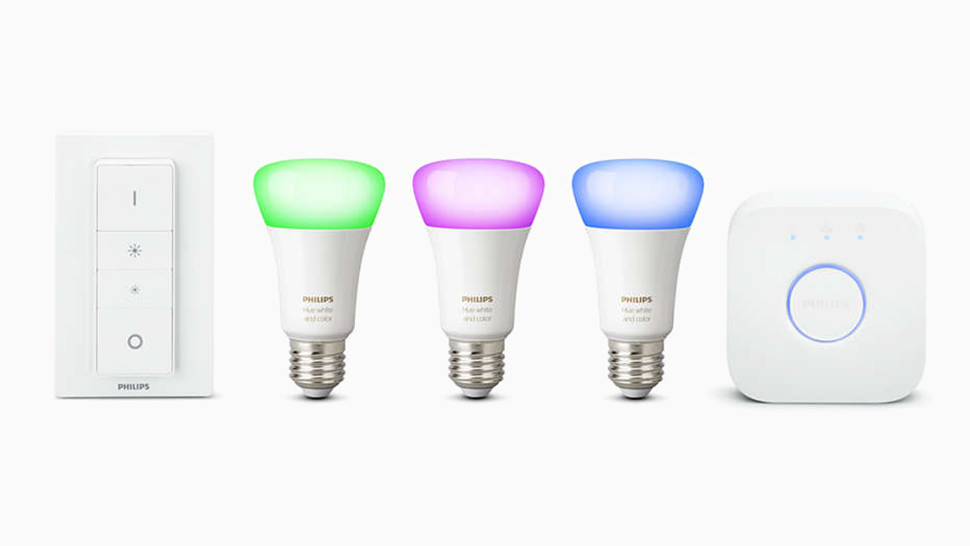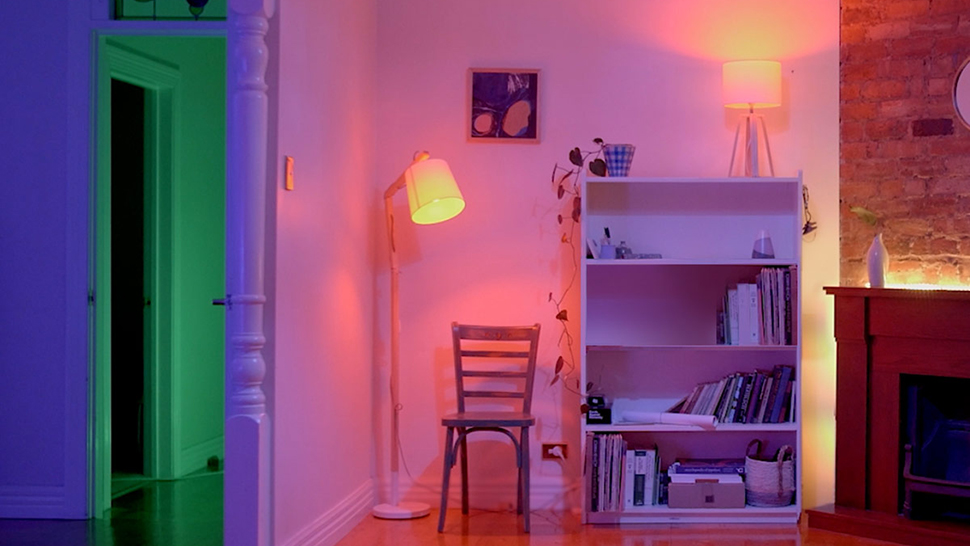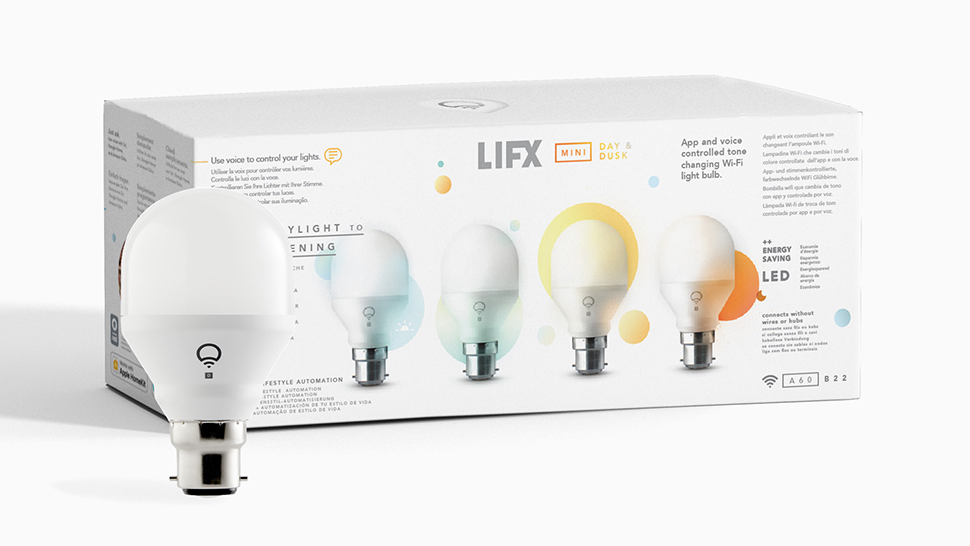Philips Hue vs Lifx bulbs: which is the best pick for smart lighting?
Is Philips Hue the light in the smart bulb darkness, or does Lifx have it licked? Let's put them head-to-head


When it comes to picking the best smart lights, you want bulbs you can rely on – Philips Hue and Lifx are just that. They both sit in the upper echelon of smart bulbs, because they tick so many boxes.
You want accurate and easy control, because having your kitchen light turn off in the middle of dinner, or seeing your living room lamp take on a mind of its own with colour cycling, isn't the sort of behaviour you want to see from your smart tech.
You want quality components, strong construction, and a good looking bulb capable of a range of lighting to suit any mood.
You want a strong app backing the whole lot up, that makes hitting those perfect settings quick and super-easy.
Frankly, you get all of these things with both the Hue and Lifx platforms. But they're not the same, so let's compare the specs and the features of the two big brands so you know which bulbs you should pick.
- These are the best smart bulbs you can buy
- Pair up your smart bulbs with the best smart thermostats
- Ikea Tradfri vs Philips Hue vs Lifx: smart light brands, head to head
Philips Hue vs Lifx bulbs: design

Philips Hue
There are only so many ways to design a lightbulb, and yet both the Philips Hue and Lifx ranges manage to add a touch of class and elegance to the appearance of their bulbs. You're not going to want to hide away any of these bulbs once you've got them fitted.
The Philips Hue range is a little more diverse than the Lifx one, with light strips and standalone lamps to go alongside the colour and non-colour bulbs, an ever-growing outdoor range, and even outlandish control accessories like the Hue Play.
Get all the latest news, reviews, deals and buying guides on gorgeous tech, home and active products from the T3 experts
Lifx sticks mainly with bulbs, though there are plenty to pick from covering indoor, outdoor and security use, and some very creative feature lights including strips and tiles, and these are just as stylish as the individual bulbs.
In fact, we'd have to say that Lifx just edges it in terms of the funkiness of its designs, though Philips Hue lights are by no means ugly.
If you don't want to control everything through your phone (or a smart speaker), the Philips Hue range also includes physical dimmer switches (to fit to the wall) and tap switches (to sit on a desk). There's also an official motion sensor accessory.
Philips Hue vs Lifx bulbs: features

Lifx
One of the key differences between Philips Hue lights and Lifx lights is their connection method.
Lifx bulbs each include their own Wi-fi module, so they connect directly to your wireless router. If you get set up with a Philips system, you have traditionally needed to buy a separate Hue Bridge to control them, though recent bulbs incorporate Bluetooth too. This is one of those swings and roundabouts situations; Lifx's solution is very convenient, while Hue's, using the Zigbee smart home protocol, creates its own mesh network which vastly improves the range.
With that out of the way, the basic features are the same between the two ranges – lighting control from your smartphone, whether you're turning bulbs on and off manually or setting a schedule for when everything happens. Colours can be easily adjusted, and bulbs can be grouped into rooms.
You get a few extra features too: Philips Hue lights, for example, can be synced to whatever's showing on your TV or laptop screen, which is perfect for movie night. Lifx, meanwhile, offers a feature called Effects, which cover simulations like candlelight and a strobe light, and which you don't get with Philips.
As for other systems and apps, both Philips Hue and Lifx are compatible with IFTTT (If This Then That), Apple HomeKit, Amazon Alexa, and Google Assistant – so no matter how your smart home is set up, you should be able to get your Philips Hue and Lifx bulbs working seamlessly with everything else.
Philips Hue vs Lifx bulbs: apps

Philips Hue
Both Philips Hue and Lifx offer apps for Android and iOS as you would expect, and both are sleek and simple to use – the Philips Hue one was recently revamped, which helps, but we slightly prefer the colour picker in the Lifx app (it's a more precise colour wheel rather than a palette blob).
Tasks like grouping bulbs and setting timers are easy to do in either set of apps, but again the Lifx apps seem to have the edge (to us at least) in user-friendliness. There's not much in it though, and your mileage may vary.
The apps offered up by the two ranges are very well matched throughout: whether you want to fall asleep to slowly dimming lights or have them change colours through the day, both Philips Hue and Lifx have you covered.
Take a browse around the Android and iOS app stores and you'll notice a lot of third-party apps that can plug into the Philips Hue and Lifx systems too – apps that can do cool stuff like make your lights respond to the weather. We'd say there are more apps that support Philips Hue lights than Lifx lights right now, but some support both.
Philips Hue vs Lifx bulbs: verdict

Lifx
There's a good reason these two brands tend to dominate lists of the best smart lighting products: they both offer some very good bulbs, with lots of functionality, and accompanying apps that are a pleasure to use. You're going to have a lot of fun with your smart lights whichever option you end up going for.
That Hue Bridge is obviously a factor in any purchasing decision – it's an extra expense and an extra bit of hardware. If you just want to get started with one or two bulbs, then the Lifx models might be a better bet. On the other hand, the Philips Hue range is bigger overall, so is more suitable if you're going all-in on the smart lighting.
In terms of what you can actually do with your bulbs, it's pretty even too – Philips Hue just slightly has the edge here, because of the extra third-party apps and the experiments in Hue Labs, but Lifx also covers all the basics and then some. Integration with the likes of Amazon Alexa and Google Home is solid across the board.
We think the Philips Hue system just about edges it – it's been around the longest and brings with it the most features and the most bulbs. Lifx, the lean and slick challenger, has a lot to offer too though, and is definitely worth careful consideration as well.
Dave has over 20 years' experience in the tech journalism industry, covering hardware and software across mobile, computing, smart home, home entertainment, wearables, gaming and the web – you can find his writing online, in print, and even in the occasional scientific paper, across major tech titles like T3, TechRadar, Gizmodo and Wired. Outside of work, he enjoys long walks in the countryside, skiing down mountains, watching football matches (as long as his team is winning) and keeping up with the latest movies.
